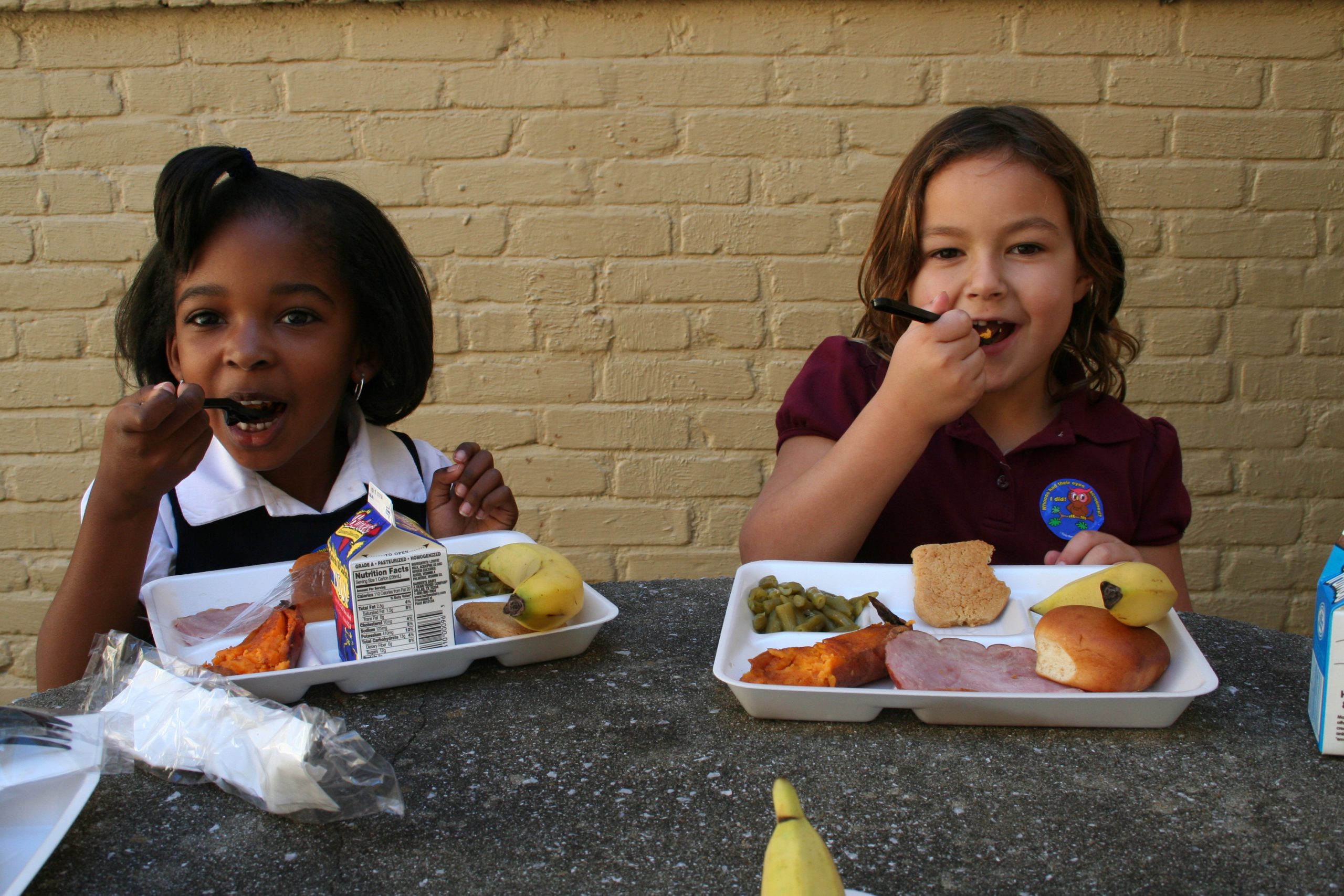Home > Alabama > Alabama Ag Education > Farm to School Program Connects Students to Fresh, Local Food
Farm to School Program Connects Students to Fresh, Local Food
One day each year, Alabama students enjoy state-grown sweet potatoes on their school lunch trays. And on other days, they are served local watermelons, satsuma mandarins and apples, all through the Alabama Farm to School program.

In the mid-1990s, Alabama became part of the National Farm to School Network, which originated in North Carolina with the help of an unlikely pair – Secretary of State Hillary Clinton and former Sen. Elizabeth Dole.
“The program (in this region) basically got started in North Carolina,” says Nick Zorn, manager of the State Farmers Market in Montgomery. “When Mrs. Clinton was first lady, she was interested in child nutrition. Elizabeth Dole was the U.S. senator from North Carolina.”
They saw that strawberries from California were being served in North Carolina schools, Zorn says, but both women knew North Carolina grows strawberries. Together, they launched the Farm to School network. Farm to School – now expanded to more than 2,000 programs in 50 states – is a win-win for farmers and students.
Alabama has been participating in the program for more than 12 years, through a partnership between the Alabama Department of Agriculture and Industries and the Alabama Department of Defense (DoD).
In its inaugural year, the DoD bought 577,520 pounds of watermelons, sweet potatoes and satsuma mandarins from local growers to use in schools, according to Zorn. During its 12 years, the program has reached most Alabama students. Of the 800,000 in Alabama public schools, the school lunch program feeds 500,000 kids a day.
Students get not only fresh produce in their diet, but other benefits. Some who choose healthier cafeteria options eat more fruits and vegetables at home, consume less unhealthy foods and sodas, reduce TV-watching time and exercise more, according to a 2009 nationwide report titled “Bearing Fruit: Farm to School Program Evaluation Resources and Recommendations.”
Farmers benefit from the program too. The average income from Farm to School represents up to 5 percent of all sales for individual farmers, according to the report.
“This has also been really good for our farmers,” Zorn says. “The schools want (500,000) 10- to 12-ounce sweet potatoes. In Alabama, we have three or four farmers who can reach that (by deadlines set by the Alabama Department of Education ,which handles school orders). Now, we have a market for sweet potatoes (which are too small for the commercial market and grocers) and get a pretty good price for it.”
Zorn explains that the state department of education gives him three months to coordinate the distribution from farmers to schools. Fresh fruits and vegetables must be at the distribution center on a Friday in order to be served at schools the following Monday and Tuesday.
Organizers have tried to add different fruits and vegetables to the program, but the growing season is not always conducive.
The state has an abundance of corn, peas and beans, but these don’t meet the school deadlines for fresh fruit and vegetables, Zorn says.
“Our growing season is the biggest problem,” Zorn says. “The program calls for fresh food. It can’t be frozen or canned … That holds us back.”
The main Alabama crops going to schools are apples, sweet potatoes, watermelons, grape tomatoes and satsumas, Zorn says. State schools are allowed to buy produce from other states that meets the “fresh” criteria.
“It’s a good program and we sure want to keep it up,” he says.




I am interested in creating partnerships with local farms and universities.